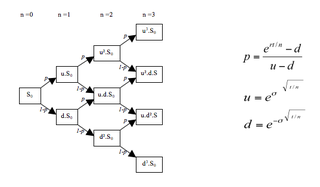Accounting

In corporate finance and the accounting profession, financial modeling typically entails financial statement forecasting; usually the preparation of detailed company-specific models used for decision making purposes [1] and financial analysis.
Applications include:
- Business valuation and stock valuation - especially via discounted cash flow, but including other valuation approaches
- Scenario planning and management decision making ("what is"; "what if"; "what has to be done" [3] )
- Budgeting: revenue forecasting and analytics; production budgeting; operations budgeting
- Capital budgeting, including cost of capital (i.e. WACC) calculations
- Cash flow forecasting; working capital- and treasury management; asset and liability management
- Financial statement analysis / ratio analysis (including of operating- and finance leases, and R&D)
- Transaction analytics: M&A, PE, VC, LBO, IPO, Project finance, [4] P3
- Credit decisioning: Credit analysis, Consumer credit risk; impairment- and provision-modeling
- Management accounting: Activity-based costing, Profitability analysis, Cost analysis, Whole-life cost, Managerial risk accounting
- Public sector procurement [5]
To generalize [ citation needed ] as to the nature of these models: firstly, as they are built around financial statements, calculations and outputs are monthly, quarterly or annual; secondly, the inputs take the form of "assumptions", where the analyst specifies the values that will apply in each period for external / global variables (exchange rates, tax percentage, etc....; may be thought of as the model parameters ), and for internal / company specific variables (wages, unit costs, etc....). Correspondingly, both characteristics are reflected (at least implicitly) in the mathematical form of these models: firstly, the models are in discrete time; secondly, they are deterministic. For discussion of the issues that may arise, see below; for discussion as to more sophisticated approaches sometimes employed, see Corporate finance § Quantifying uncertainty and Financial economics § Corporate finance theory.
Modelers are often designated "financial analyst" (and are sometimes referred to, tongue in cheek, as "number crunchers"). Typically, [6] the modeler will have completed an MBA or MSF with (optional) coursework in "financial modeling". [7] Accounting qualifications and finance certifications such as the CIIA and CFA generally do not provide direct or explicit training in modeling. [8] At the same time, numerous commercial training courses are offered, both through universities and privately. For the components and steps of business modeling here, see Outline of finance § Financial modeling; see also Valuation using discounted cash flows § Determine cash flow for each forecast period for further discussion and considerations.
Although purpose-built business software does exist, the vast proportion of the market is spreadsheet-based; this is largely since the models are almost always company-specific. Also, analysts will each have their own criteria and methods for financial modeling. [9] Microsoft Excel now has by far the dominant position, having overtaken Lotus 1-2-3 in the 1990s. Spreadsheet-based modelling can have its own problems, [10] and several standardizations and "best practices" have been proposed. [11] "Spreadsheet risk" is increasingly studied and managed; [11] see model audit.
One critique here, is that model outputs, i.e. line items, often inhere "unrealistic implicit assumptions" and "internal inconsistencies". [12] (For example, a forecast for growth in revenue but without corresponding increases in working capital, fixed assets and the associated financing, may imbed unrealistic assumptions about asset turnover, debt level and/or equity financing. See Sustainable growth rate § From a financial perspective.) What is required, but often lacking, is that all key elements are explicitly and consistently forecasted. Related to this, is that modellers often additionally "fail to identify crucial assumptions" relating to inputs, "and to explore what can go wrong". [13] Here, in general, modellers "use point values and simple arithmetic instead of probability distributions and statistical measures" [14] — i.e., as mentioned, the problems are treated as deterministic in nature — and thus calculate a single value for the asset or project, but without providing information on the range, variance and sensitivity of outcomes; [15] see Valuation using discounted cash flows § Determine equity value. A further, more general critique relates to the lack of basic computer programming concepts amongst modelers, [16] with the result that their models are often poorly structured, and difficult to maintain. Serious criticism is also directed at the nature of budgeting, and its impact on the organization. [17] [18]


